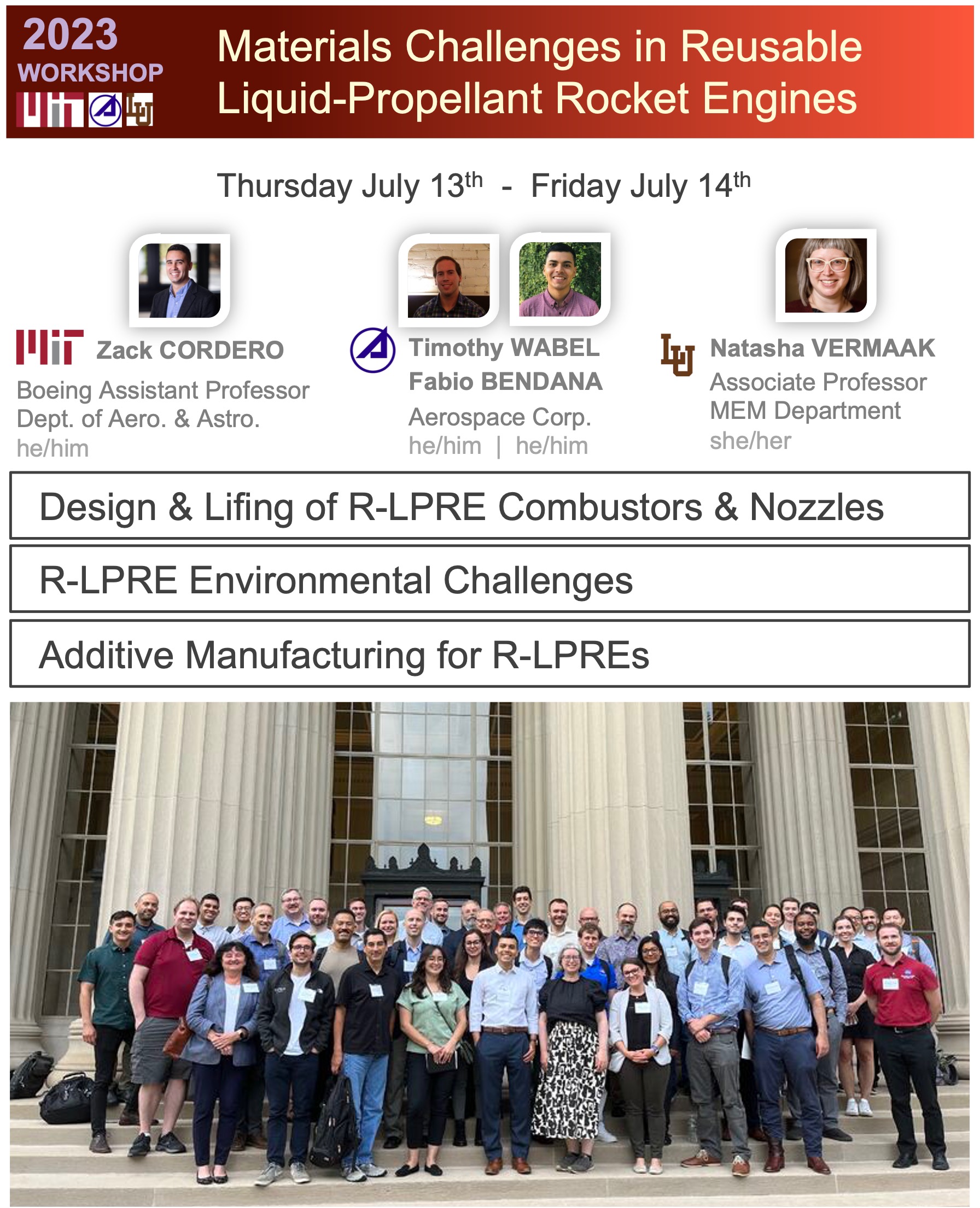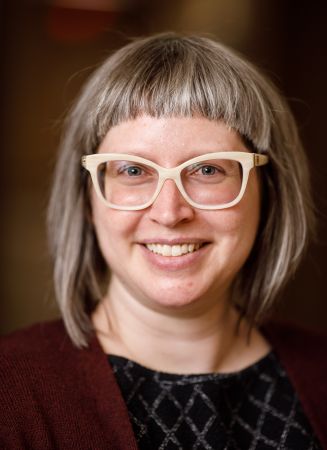Recently, MechE Prof. Natasha Vermaak joined forces with The Aerospace Corporation’s Dr. T. Wabel, Dr. F. Bendana, and Prof. Z. Cordero from MIT’s Department of Aeronautics and Astronautics to host a workshop by invitation only for over 60 leaders in industry, government labs, and academia working at the cutting edge of technologies for reusable liquid-propellant rocket engines (Figure 1).

These types of engines need to carry their own fuel (e.g. liquid hydrogen) and oxidizer in specialized tanks and the combustor is where they ignite and burn as a super-heated, high-pressure gas that produces thrust when accelerating through the combustor throat and out the rocket nozzle.
Representatives from SpaceX, Blue Origin, Ursa Major, Agile Space Industries, Relativity Space, US Air Force Research Laboratory, US Space Force, and NASA, among others, joined the conversations about key research opportunities in (i) environmental degradation, (ii) nozzle and combustor lifing (Vermaak Lead), and (iii) qualification of additively manufactured flight hardware. The next workshop is slated for Spring of 2025 at The Aerospace Corporation’s research and development center in El Segundo, California.
MechE Prof. Natasha Vermaak’s research includes the design of materials and structures for extreme aerospace conditions, spanning interests in actively cooled combustor liners for airbreathing hypersonic vehicles to liquid propellant rocket engines. She has led an AFOSR grant on optimizing elastoplastic behaviors in multifunctional structures for aerospace vehicles, and spent two summers working with the Multidisciplinary Science and Technology Center (Aerospace Vehicles Division, Aerospace Systems Directorate of the Air Force Research Laboratory) through the AFOSR Summer Faculty Fellowship Program. For additional background, see more about Vermaak’s Thermostructural Laboratory, which was featured by industry for its capabilities in probing cyclic thermomechanical and elastoplastic shakedown behaviors.

